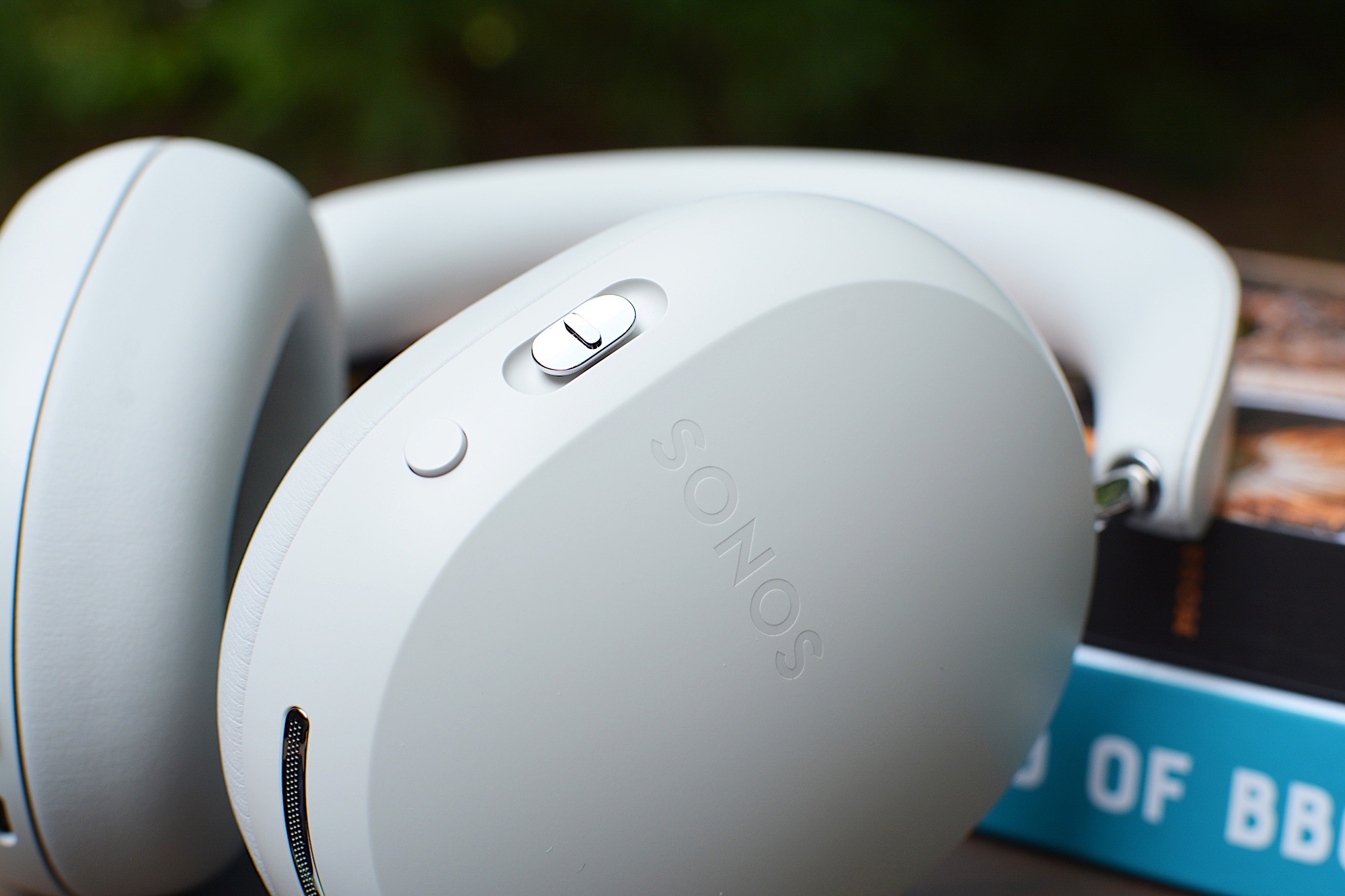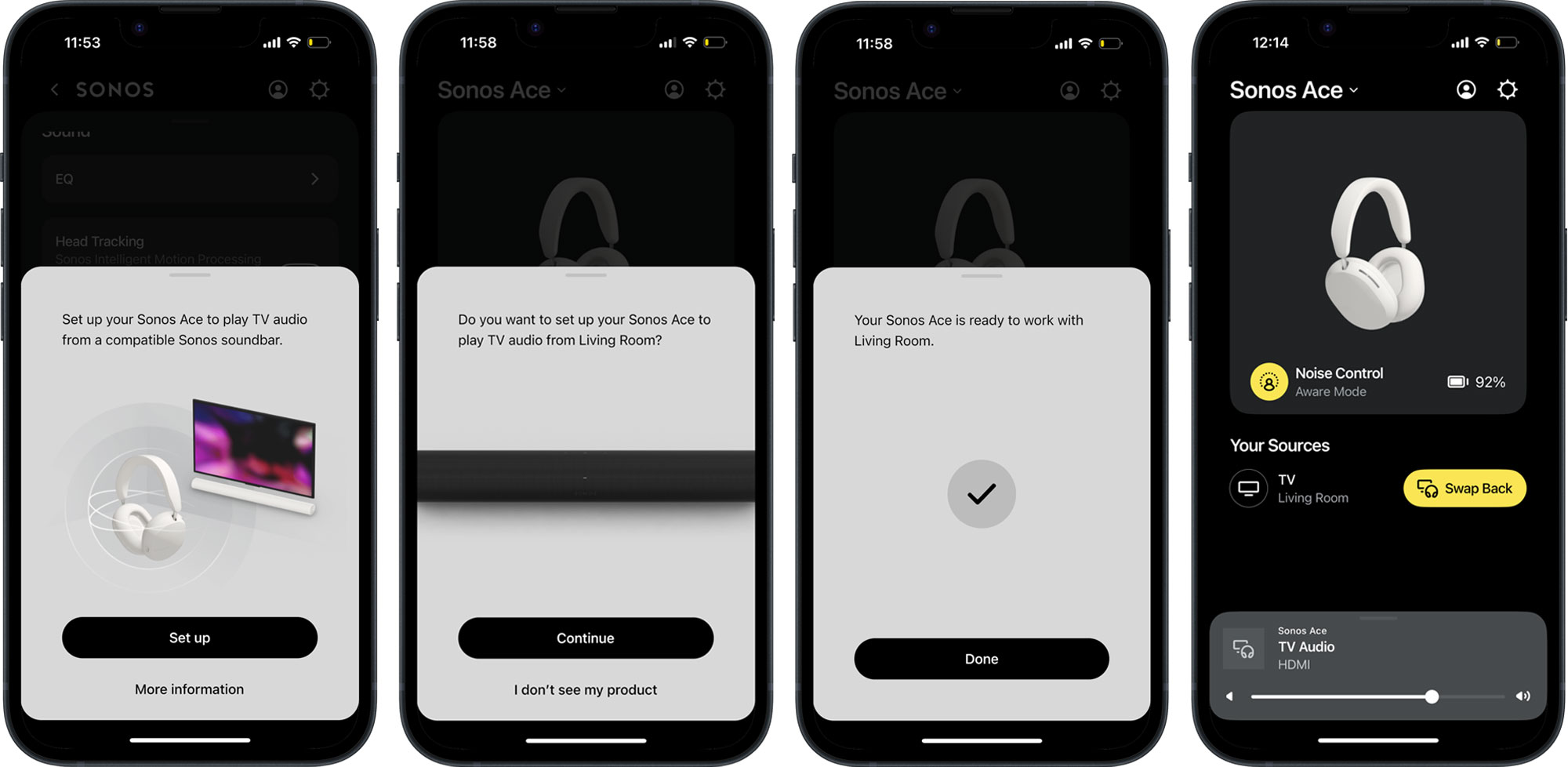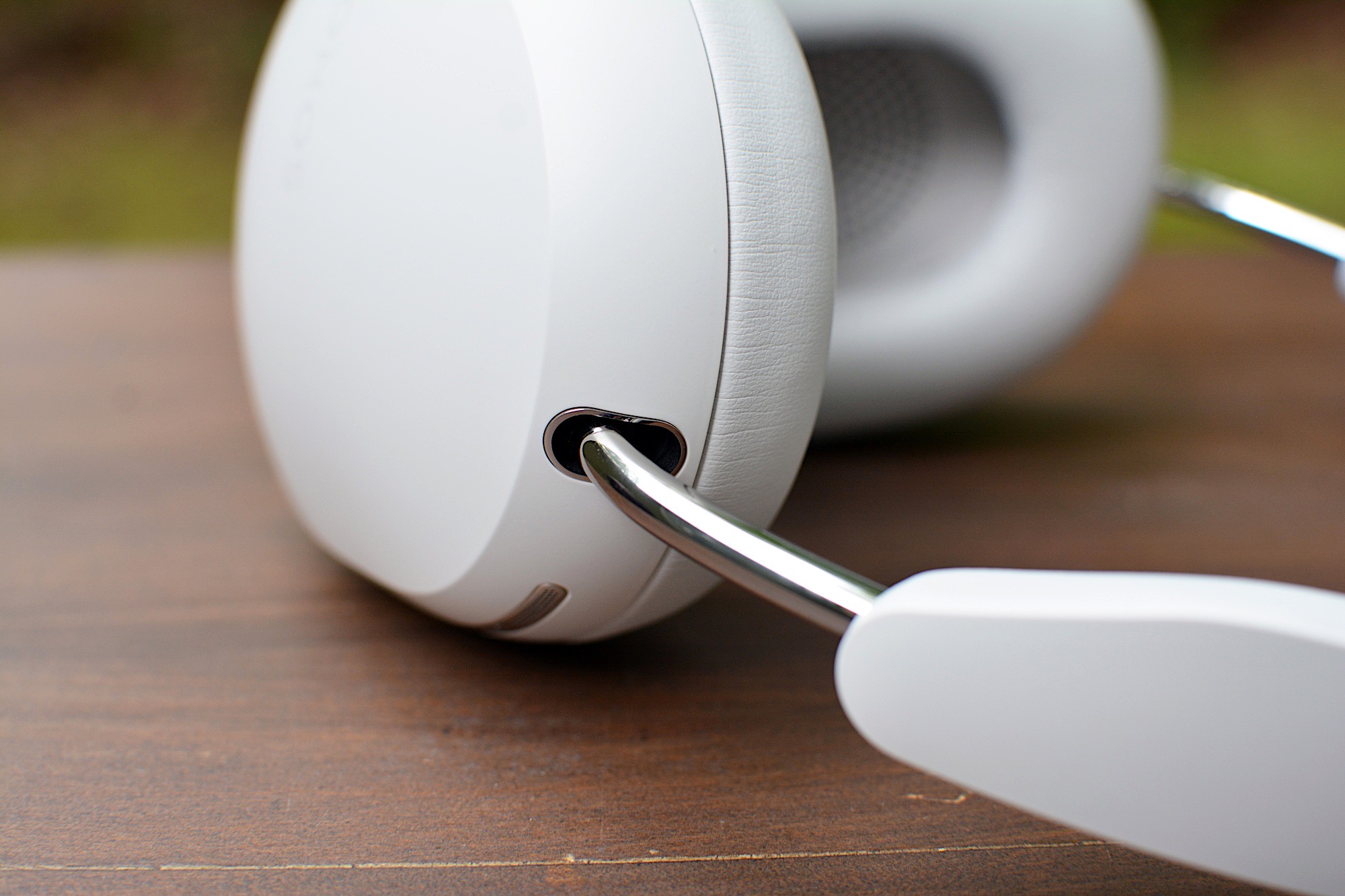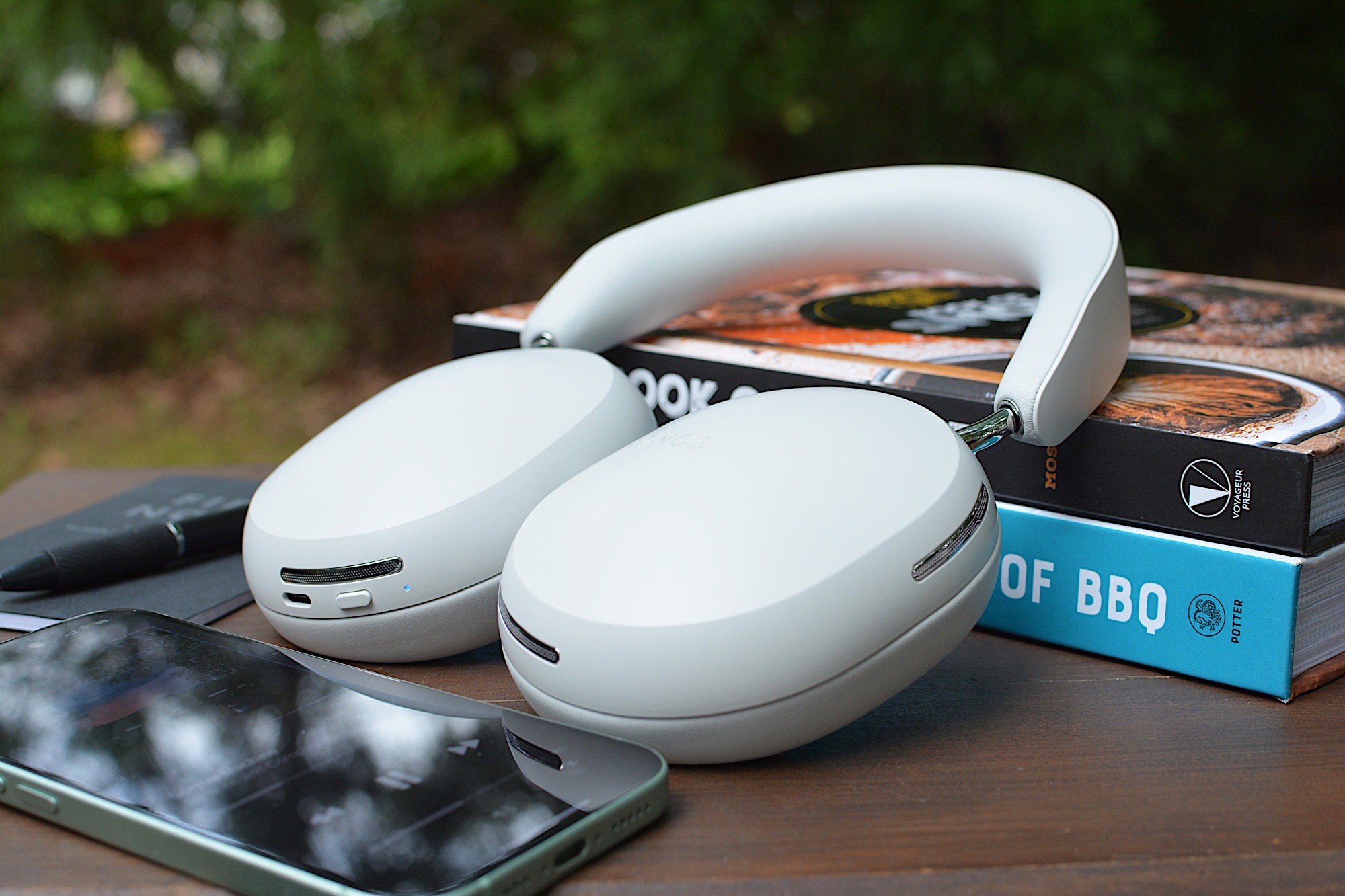- Регистрация
- 17 Февраль 2018
- Сообщения
- 25 397
- Лучшие ответы
- 0
- Баллы
- 2 093
Offline
When Dolby made a play for the headphones market in 2018, its tech-packed Dimension model offered excellent sound quality, but the $599 price was too high to take hold. Now Sonos, another key player in living room audio over the last decade, has entered similarly uncharted territory. After years of hints and rumors, the Sonos Ace ($449) arrives this week, and the company is delivering the refined design you’d expect along with some impressive audio quality. The way these headphones integrate with its speakers isn’t what many expected, but the feature works well. However, one thing that may mire an otherwise stellar debut is limited support for the Ace at launch.
Sound quality and ANC performance
Given Sonos’ sonic prowess, I had high expectations for sound quality on the Ace. Indeed, the company’s first set of headphones offers audio quality on par with its high-end speakers, with some home theater features thrown in. 40mm dynamic drivers deliver both power and clarity that put the Ace near the top of our list of best wireless headphones when it comes to sound performance. Bass is big and boomy for kick drum thumps on Bilmuri’s post-hardcore “Talkin’ 2 Ur Ghost,” but it's appropriately restrained on Wyatt Flores’ country foot-tapper “Milwaukee,” where there’s still plenty of detail in the more subdued rhythm section.
Like many Sonos speakers, the Ace excels with Dolby Atmos content. And that goes for both music and TV/movies. There's an Apple Music Live set from Luke Combs that was filmed at a country venue while most of those sessions are in a studio. With the Ace, you get a strong sense that you’re at the show. The reverb, singing crowd, loudness of the venue mix and the natural qualities of a live band are all enhanced on these headphones. When I watched Drive to Survive or the final siege in Rogue One, the Ace shone with the directional zooms of F1 cars and spacecraft.
The Sonos Ace supports lossless audio in two ways. The first is via a wired USB-C connection. The second is exclusive to recent Android devices. If you have one of those, you’ll be able to use aptX Lossless from Qualcomm’s Snapdragon Sound platform that allows higher-quality sound over Bluetooth. This second option wasn’t available during the review period so I wasn’t able to test it, but Sonos says it will be ready when the Ace ships on June 5.
There aren’t many companies that come close to Apple with their ambient sound mode, but Sonos gives the AirPods Max some competition. Apple has mastered natural-sounding transparency audio and the Ace nearly attains that, providing one of the few setups where I could adequately hear my voice without feeling the need to shout. This is great when you need to have a quick conversation or use the Ace for a call. It also means you have a firm grasp on your surroundings, not a somewhat muted version of them.
Active noise cancellation (ANC) is another area where Sonos doesn’t have much experience, and it’s one of few stumbles on the Ace. Constant noise, while muted, is still discernible unless the volume is turned up. You’ll also need to set it at a considerable level to drown out human voices. It’s probably enough to get the job done in many scenarios, but it’s not on par with Bose or Sony.
TV Audio Swap and True Cinema

Billy Steele for Engadget
Where the Ace flexes its Sonos wings is the ability to receive audio from one of the company’s soundbars. The feature, called TV Audio Swap, allows you to do so with the press of a button – either on the headphones or inside the Sonos app. Basically, the tool creates private listening in your living room when your family has gone to bed or at other times you don’t want to disturb them. After a quick setup to link the Ace with your Sonos soundbar, TV Audio Swap really is as quick and easy as pressing a button. And because a Sonos soundbar is connected to your TV via HDMI ARC, this works with streaming devices and game consoles that are routed through the speaker.
When you activate the TV Audio Swap, a Wi-Fi chip inside the Ace takes over to receive signals from the soundbar. Low-energy Bluetooth remains connected to your phone for controls and settings, but you won’t get device swapping like you would with multipoint Bluetooth. This means if you get a call, you have to un-swap for Bluetooth to reconnect (it also means your phone won’t ring in the headphones if TV Audio Swap is active).
Spatial audio and Dolby head tracking are only available when TV Audio Swap is on. You can disable one or both of those, but spatial audio does a good job of upmixing stereo content into something more immersive. A prime example is TNT’s broadcasts of the NBA playoffs. Regularly, the commentary trio is clear with a bit of crowd noise in the background, but after Sonos does its tricks, the announcers are more prominent and dynamic. Plus, the cheers of the crowd envelope you so it feels more like you’re in the arena.
Dynamic head tracking works well on the Ace, and Sonos uniquely implements it to make it less annoying when you need to move around. First, it’s not overly sensitive, so subtle movements like looking down at your phone won’t rejigger the sound positioning. Second, if you walk away from the connected soundbar, head tracking will deactivate until you’re back in close proximity. This means whatever you’re listening to is not stuck behind you when you walk away and it doesn’t constantly rotate around your head during a quick jaunt to the kitchen.

Billy Steele for Engadget
The main caveat here is that TV Audio Swap only works with the Sonos Arc soundbar for now. Sonos says support for both generations of the Beam and the Ray is on the way, but there’s no definitive timeline for it yet. What’s more, there aren’t any plans to allow a similar feature for users who have a pair of speakers for home entertainment purposes. The company didn’t rule it out as part of a future update, but for now if you have two Era 300 units flanking your TV, you’re out of luck. Audio swap is also only available in the iOS version of the app for now, so Android users will have to wait.
If you were hoping to send audio to the Ace as if it were a speaker in your Sonos multiroom setup, you’re going to be disappointed. There isn’t a hand-off feature to easily transition from your commute to home listening on a speaker either. Some iteration of those would’ve relied more heavily on Wi-Fi and thus impacted battery life, according to Sonos. Instead, the company opted for this clever sound swapping that only uses Wi-Fi when you’re piggybacking off of a soundbar.
Chances are if you’ve used a Sonos speaker, you’re familiar with TruePlay, which maps the acoustics of a room with the microphones in one of the company’s devices. There’s a version of that for the Ace, called True Cinema, but it works differently. True Cinema virtualizes surround sound for a room inside the headphones to make it seem like you’re not wearing the Ace at all. Sonos argues that if you replicate the acoustics of your living room for the headphones, it enhances the immersion. Unfortunately, this is one more thing that’s not ready yet, so I wasn’t able to test it.
Design

Billy Steele for Engadget
Given Sonos’ attention to detail on its speakers, it's no surprise that it also obsessed over the design of its first headphones. The shape of the ear cups takes inspiration from devices like the Move 2 and the company opted for a mix of matte finishes, stainless steel and vegan leather to complete the high-end look. To me, the white version looks a bit more premium given the contrast of the silver metal accents compared to the tone-on-tone aesthetic of the black option.
A key design choice that contributes to the Ace’s chic is the hidden hinge. Whereas a lot of headphones fold in on themselves for storage, Sonos chose to simply have the ear cups rotate flat to fit in their carrying case. It’s a move Apple employed for the AirPods Max and one that companies like Sony have used in the past as well. Thanks to the svelte silhouette of the ear cups, and really of the Ace overall, these headphones don’t take up much space in a bag. What’s more, Sonos included a magnetic cord pouch for the case and both USB-C and USB-C to 3.5mm cables in the box. Your move, Apple.
The Ace is also very comfortable. Memory foam ear pads, a cushioned headband and a shape that fits well on big heads like mine really help. They feel lightweight and there’s no clamping pressure around my ears. And while I wasn’t able to test these on a flight, I could see the Ace being a great companion on a long-haul trip, especially since they remained comfy for the entirety of a movie using TV Audio Swap.
Battery life
Sonos promises 30 hours of use with the Ace with ANC active. That’s on par with flagship models from the likes of Bose and Sony, and it’s 10 hours more than AirPods Max. During my test with looping audio at 60 to 70 percent volume, I managed 30 minutes more than the company pledges. Sonos is clear that TV Audio Swap impacts its stated figure, so you’ll want to keep that in mind if you have a binge session coming up. But, I didn’t notice any drastic drain during my evaluations. If you do find yourself at zero, a quick-charge feature gives you three hours of listening time in just three minutes.
The competition

Billy Steele for Engadget
At this price, the primary competition for the Ace is the AirPods Max. Apple’s over-ear headphones are $100 more at full price, but we’ve seen them drop to $450 as recently as this month. Since they’re AirPods, they sync with iPhone, iPad and Mac to offer more convenience than the Ace. That includes automatic pairing with devices you’ve linked to iCloud, seamless switching when you get a call, hands-free Siri and Adaptive EQ sound tweaks. Spatial audio with head tracking is available on the Max too, and they’re comfortable to wear for long periods of time despite the premium materials.
A cheaper option, and the best ANC headphones for most people looking for active noise cancellation, is the Sony WH-1000XM5. Simply put, no other company offers the long list of features that Sony does on its flagship model. In addition to great sound and powerful ANC, the company’s tools like Speak-to-Chat, Adaptive Sound Control and DSEE Extreme audio upscaling expand the capabilities of the 1000XM5. Spatial sound via 360 Reality Audio is limited to certain services, but Sony built a comfy device that’s easy to enjoy for hours at a time for any content. Of course, the 1000XM5 is also considerably cheaper than the Ace at the current price of $330.
Wrap-up
After a years-long wait, Sonos delivered an impressive headphone debut with the Ace. There’s room for improvement in some areas and it’s disappointing that updates to the Android app, support for all of the company’s soundbars and a key home theater feature are arriving at a date that’s yet to be determined. There’s no doubt that Sonos built a great-looking set of headphones that sound excellent, but a bit more polish could’ve gone a long way.
This article originally appeared on Engadget at https://www.engadget.com/sonos-ace-...e-but-incomplete-debut-130040041.html?src=rss
Sound quality and ANC performance
Given Sonos’ sonic prowess, I had high expectations for sound quality on the Ace. Indeed, the company’s first set of headphones offers audio quality on par with its high-end speakers, with some home theater features thrown in. 40mm dynamic drivers deliver both power and clarity that put the Ace near the top of our list of best wireless headphones when it comes to sound performance. Bass is big and boomy for kick drum thumps on Bilmuri’s post-hardcore “Talkin’ 2 Ur Ghost,” but it's appropriately restrained on Wyatt Flores’ country foot-tapper “Milwaukee,” where there’s still plenty of detail in the more subdued rhythm section.
Like many Sonos speakers, the Ace excels with Dolby Atmos content. And that goes for both music and TV/movies. There's an Apple Music Live set from Luke Combs that was filmed at a country venue while most of those sessions are in a studio. With the Ace, you get a strong sense that you’re at the show. The reverb, singing crowd, loudness of the venue mix and the natural qualities of a live band are all enhanced on these headphones. When I watched Drive to Survive or the final siege in Rogue One, the Ace shone with the directional zooms of F1 cars and spacecraft.
The Sonos Ace supports lossless audio in two ways. The first is via a wired USB-C connection. The second is exclusive to recent Android devices. If you have one of those, you’ll be able to use aptX Lossless from Qualcomm’s Snapdragon Sound platform that allows higher-quality sound over Bluetooth. This second option wasn’t available during the review period so I wasn’t able to test it, but Sonos says it will be ready when the Ace ships on June 5.
There aren’t many companies that come close to Apple with their ambient sound mode, but Sonos gives the AirPods Max some competition. Apple has mastered natural-sounding transparency audio and the Ace nearly attains that, providing one of the few setups where I could adequately hear my voice without feeling the need to shout. This is great when you need to have a quick conversation or use the Ace for a call. It also means you have a firm grasp on your surroundings, not a somewhat muted version of them.
Active noise cancellation (ANC) is another area where Sonos doesn’t have much experience, and it’s one of few stumbles on the Ace. Constant noise, while muted, is still discernible unless the volume is turned up. You’ll also need to set it at a considerable level to drown out human voices. It’s probably enough to get the job done in many scenarios, but it’s not on par with Bose or Sony.
TV Audio Swap and True Cinema
Billy Steele for Engadget
Where the Ace flexes its Sonos wings is the ability to receive audio from one of the company’s soundbars. The feature, called TV Audio Swap, allows you to do so with the press of a button – either on the headphones or inside the Sonos app. Basically, the tool creates private listening in your living room when your family has gone to bed or at other times you don’t want to disturb them. After a quick setup to link the Ace with your Sonos soundbar, TV Audio Swap really is as quick and easy as pressing a button. And because a Sonos soundbar is connected to your TV via HDMI ARC, this works with streaming devices and game consoles that are routed through the speaker.
When you activate the TV Audio Swap, a Wi-Fi chip inside the Ace takes over to receive signals from the soundbar. Low-energy Bluetooth remains connected to your phone for controls and settings, but you won’t get device swapping like you would with multipoint Bluetooth. This means if you get a call, you have to un-swap for Bluetooth to reconnect (it also means your phone won’t ring in the headphones if TV Audio Swap is active).
Spatial audio and Dolby head tracking are only available when TV Audio Swap is on. You can disable one or both of those, but spatial audio does a good job of upmixing stereo content into something more immersive. A prime example is TNT’s broadcasts of the NBA playoffs. Regularly, the commentary trio is clear with a bit of crowd noise in the background, but after Sonos does its tricks, the announcers are more prominent and dynamic. Plus, the cheers of the crowd envelope you so it feels more like you’re in the arena.
Dynamic head tracking works well on the Ace, and Sonos uniquely implements it to make it less annoying when you need to move around. First, it’s not overly sensitive, so subtle movements like looking down at your phone won’t rejigger the sound positioning. Second, if you walk away from the connected soundbar, head tracking will deactivate until you’re back in close proximity. This means whatever you’re listening to is not stuck behind you when you walk away and it doesn’t constantly rotate around your head during a quick jaunt to the kitchen.
Billy Steele for Engadget
The main caveat here is that TV Audio Swap only works with the Sonos Arc soundbar for now. Sonos says support for both generations of the Beam and the Ray is on the way, but there’s no definitive timeline for it yet. What’s more, there aren’t any plans to allow a similar feature for users who have a pair of speakers for home entertainment purposes. The company didn’t rule it out as part of a future update, but for now if you have two Era 300 units flanking your TV, you’re out of luck. Audio swap is also only available in the iOS version of the app for now, so Android users will have to wait.
If you were hoping to send audio to the Ace as if it were a speaker in your Sonos multiroom setup, you’re going to be disappointed. There isn’t a hand-off feature to easily transition from your commute to home listening on a speaker either. Some iteration of those would’ve relied more heavily on Wi-Fi and thus impacted battery life, according to Sonos. Instead, the company opted for this clever sound swapping that only uses Wi-Fi when you’re piggybacking off of a soundbar.
Chances are if you’ve used a Sonos speaker, you’re familiar with TruePlay, which maps the acoustics of a room with the microphones in one of the company’s devices. There’s a version of that for the Ace, called True Cinema, but it works differently. True Cinema virtualizes surround sound for a room inside the headphones to make it seem like you’re not wearing the Ace at all. Sonos argues that if you replicate the acoustics of your living room for the headphones, it enhances the immersion. Unfortunately, this is one more thing that’s not ready yet, so I wasn’t able to test it.
Design
Billy Steele for Engadget
Given Sonos’ attention to detail on its speakers, it's no surprise that it also obsessed over the design of its first headphones. The shape of the ear cups takes inspiration from devices like the Move 2 and the company opted for a mix of matte finishes, stainless steel and vegan leather to complete the high-end look. To me, the white version looks a bit more premium given the contrast of the silver metal accents compared to the tone-on-tone aesthetic of the black option.
A key design choice that contributes to the Ace’s chic is the hidden hinge. Whereas a lot of headphones fold in on themselves for storage, Sonos chose to simply have the ear cups rotate flat to fit in their carrying case. It’s a move Apple employed for the AirPods Max and one that companies like Sony have used in the past as well. Thanks to the svelte silhouette of the ear cups, and really of the Ace overall, these headphones don’t take up much space in a bag. What’s more, Sonos included a magnetic cord pouch for the case and both USB-C and USB-C to 3.5mm cables in the box. Your move, Apple.
The Ace is also very comfortable. Memory foam ear pads, a cushioned headband and a shape that fits well on big heads like mine really help. They feel lightweight and there’s no clamping pressure around my ears. And while I wasn’t able to test these on a flight, I could see the Ace being a great companion on a long-haul trip, especially since they remained comfy for the entirety of a movie using TV Audio Swap.
Battery life
Sonos promises 30 hours of use with the Ace with ANC active. That’s on par with flagship models from the likes of Bose and Sony, and it’s 10 hours more than AirPods Max. During my test with looping audio at 60 to 70 percent volume, I managed 30 minutes more than the company pledges. Sonos is clear that TV Audio Swap impacts its stated figure, so you’ll want to keep that in mind if you have a binge session coming up. But, I didn’t notice any drastic drain during my evaluations. If you do find yourself at zero, a quick-charge feature gives you three hours of listening time in just three minutes.
The competition
Billy Steele for Engadget
At this price, the primary competition for the Ace is the AirPods Max. Apple’s over-ear headphones are $100 more at full price, but we’ve seen them drop to $450 as recently as this month. Since they’re AirPods, they sync with iPhone, iPad and Mac to offer more convenience than the Ace. That includes automatic pairing with devices you’ve linked to iCloud, seamless switching when you get a call, hands-free Siri and Adaptive EQ sound tweaks. Spatial audio with head tracking is available on the Max too, and they’re comfortable to wear for long periods of time despite the premium materials.
A cheaper option, and the best ANC headphones for most people looking for active noise cancellation, is the Sony WH-1000XM5. Simply put, no other company offers the long list of features that Sony does on its flagship model. In addition to great sound and powerful ANC, the company’s tools like Speak-to-Chat, Adaptive Sound Control and DSEE Extreme audio upscaling expand the capabilities of the 1000XM5. Spatial sound via 360 Reality Audio is limited to certain services, but Sony built a comfy device that’s easy to enjoy for hours at a time for any content. Of course, the 1000XM5 is also considerably cheaper than the Ace at the current price of $330.
Wrap-up
After a years-long wait, Sonos delivered an impressive headphone debut with the Ace. There’s room for improvement in some areas and it’s disappointing that updates to the Android app, support for all of the company’s soundbars and a key home theater feature are arriving at a date that’s yet to be determined. There’s no doubt that Sonos built a great-looking set of headphones that sound excellent, but a bit more polish could’ve gone a long way.
This article originally appeared on Engadget at https://www.engadget.com/sonos-ace-...e-but-incomplete-debut-130040041.html?src=rss
